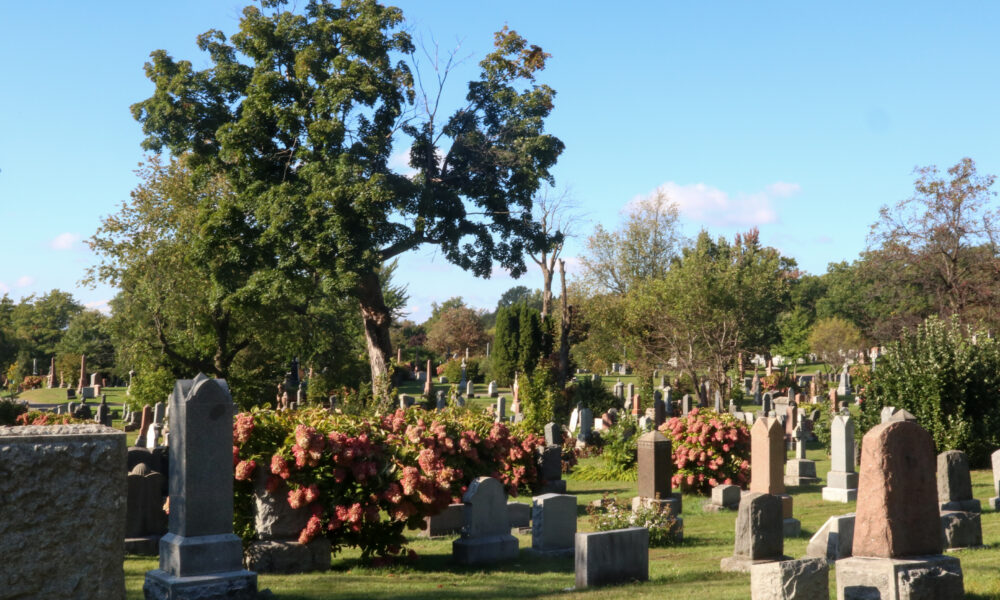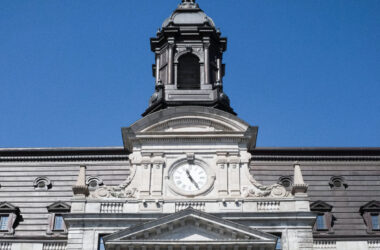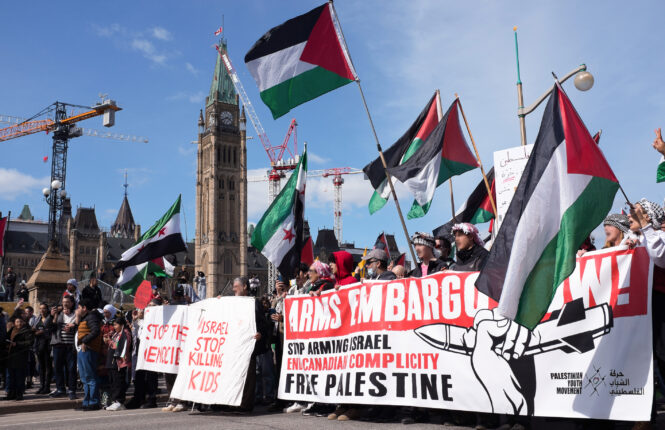Graveyards occupy a uniquely taboo space that bridges the gap between the grieved and the grieving. They might almost be considered parks, yet they are not always viewed as sanctuaries. With 41 recognized cemeteries and a rich history of burial rites, Montreal stands as the resting grounds to 1.5 million deceased persons—many of whom, having faced historical discrimination, were often denied the same dignity in death that their more privileged counterparts received.
Notre-Dame-des-Neiges, one of Montreal’s most renowned cemeteries, exemplifies traditional cemetery excellence. It features a biodiverse garden of 13,500 trees intertwined with Gothic structures and Roman Catholic design elements. Its placement allows for a perfect instant where the sun slips just past the horizon causing the graves to cast these elongated shadows—a vision I call “seeing the sleeping stretch,” one of Montreal’s sacred experiences.
In many senses, cemeteries act as time capsules of the past: a laid-to-rest reflection of the narratives we tell ourselves about the bygone era in sepia nostalgia. By revisiting graves, we humanize history and confront it with the narrative skepticism it deserves. It’s crucial to acknowledge that not all stories receive equal attention; many marginalized individuals are forgotten in death. As cemeteries garner their utmost traction around the upcoming Halloween season, it is worth considering what they stand for and why we visit them. When planning a visitation, executing proper etiquette is often just as valuable as having the right intention to respect everyone’s unique relationship to death, especially for those whose lives—and deaths—have been overlooked in the broader narrative.
Recently, there has been a flurry of controversy surrounding “#Gravetok,” a subsection of TikTok dedicated to cleaning graves and telling the stories of the deceased. The concerns primarily arise from questions of consent, damaging the graves with harsh chemicals and some echoing naturalist ideas about the significance and found beauty of allowing memory to wither and fade away as time intends.
It’s a thin line between honouring the past and letting justice slip just out of reach of recent memory—a Sisyphean task where you can’t quite have your grave and clean it too. If there is certain beauty in forgetting then what hope is there for those who never had their stories told in the first place?
As a society, we decide who deserves to have their stories told beyond death. We celebrate the deceased with decorations while often overlooking the discomfort and pain that accompany loss. However cruel we like to imagine the past, it has consistently been more difficult for marginalized groups to gain recognition and dignity in life and death. What if we were to give these individuals another chance to have their stories revisited? By acknowledging their lives and struggles, we could allow them to be remembered with the dignity they were once denied, ensuring that their legacies are honoured and their voices are heard long after they are gone. This act of remembrance could reshape our collective understanding of justice, compassion, and the value of every life, regardless of societal privilege.
Whether it be a tranquil respite from city life, existential memento mori, or the space to pay respects to those who have endured hardship, cemeteries have so much to offer the everyman and act as a microcosm of the best mankind has to offer: The very human, ultimate good faith to do well by the past while steadily moving forward towards a brighter future. It is worth challenging our taboos around death. It is worth breaking these cycles of comfort and being critical of the same stories about the same people we tell ourselves. It is the never-ending lesson in empathy, as though to say: “I’m sorry we forgot about you then, but you are loved now.” It is worth celebrating those who have passed and will pass. No one deserves to be unappreciated and forgotten; everyone deserves to be mourned.








